Letter to you from Charlie Chaplin

To everyone struggling to survive, Born on April 16, 1889, in South London, my mother Hannah Chaplin was a vaudeville singer while my father, Charles Chaplin, Sr., was a vaudeville actor. When I was just three years old, my father left my mother Hannah. Mother was single then, and had to find a way to care for me and my older brother Sydney, whom she had from an earlier relationship. “Nothing is permanent in this wicked world, not even our troubles.” Her stage career abruptly ended in 1894 when she lost her singing voice in the middle of a performance. When the audience began to throw things at her, I rushed on stage and finished her song. The audience applauded and tossed coins at me. Although mother was fired, she continued to dress up in her stage clothes at home and mimic characters to her our delight.
Soon, however, she was forced to pawn the costumes and just about everything else she owned since our father never paid child support. In 1896, when I was seven and Sydney was eleven, we were admitted to Lambeth Workhouse for the poor, along with mother. Subsequently, we were sent to Hanwell School for Orphans and Destitute Children. Mother was admitted to Cane Hill Asylum; she was suffering from the debilitating effects of syphilis. Eighteen months later, Sydney and I were taken to father’s home. Although he was an alcoholic, the authorities found him to be an able-bodied parent and in child-support arrears. But his wife Louise, also an alcoholic, resented having to take care of us and often locked us out of the house. We often had to roam the streets for food and sleep outside.
Clog dancing career
In 1898, when I was nine, mother’s illness gave her a temporary reprieve and so she was discharged from the asylum. Sydney and I were incredibly relieved and returned to live with her. Meanwhile, our father was successful in getting me into The Eight Lancashire Lads, a clog-dancing troupe. (Clog dancing is a folk dance done in many parts of the world in which the dancer wears wooden clogs in order to make a stomping noise at each downbeat.) During my theatrical apprenticeship in British music halls with The Eight Lancashire Lads, I memorized all the dance steps to precision. I used to watch the other performers from the wings, especially the pantomimes in over-sized shoes outwitting comic policemen. At the age of twelve, my clog-dancing career ended when I was diagnosed with asthma. That same year, 1901, father died of cirrhosis of the liver. Sydney found a job as a ship’s steward. I was still living with mother, worked odd jobs such as doctor’s boy, barber’s helper, retail assistant, hawker, and peddler. Sadly in 1903, mother’s health deteriorated. Suffering a bout of insanity, she was once again admitted to the asylum. “I always like walking in the rain, so no one can see me crying.”
Vaudeville and I
In 1903, I was fourteen years old. With the equivalent of an erratic fourth-grade education I joined Blackmore’s Theatrical Agency. When a part became available, I was able to get Sydney (back from the sea) a role. I was happily reunited with him. I enjoyed the applause in upper-end theaters and good reviews for the next two and a half years. When the show ended, I had difficulty in finding leading roles to play, due partly to his small stature (5’5”) and Cockney accent. So, when Sydney found work acting in a crude comedy in lower-end music halls, I reluctantly joined him. When I was sixteen, I was acting as a plumber’s klutzy assistant in a show called Repairs. In it, I used the memories of mother’s mimicking antics and father’s drunken mishaps to form my own comical character. For the next two years in various skits, shows, and acts I was able to master my own clowning technique with slapstick precision.
Stage Fright
When I turned eighteen, I was awarded the lead in a comedy play for Fred Karno and the Karno Troupe. On opening night, I was struck with stage fright. I had no voice and I feared that I was going through the same thing that mother got. Since the actors were taught all the character roles in order to stand in for one another, Sydney suggested that I play a lesser role, the part of a pantomime drunk. Karno agreed. I played it with gusto, creating continuous laughter night after night in the successful sketch, A Night in an English Music Hall. In my spare time, I became an avid reader and practiced playing the violin, discovering a passion for self-education. I grew introspective with a horror of alcohol but had no problem womanizing. Then we landed in the U.S. with the Karno Troupe in 1910. I happened to be one of the favorite Karno comedians playing Jersey City, Cleveland, St. Louis, Minneapolis, Kansas City, Denver, Butte, and Billings. When I returned to London, Sydney had married his girlfriend Minnie and mother was living in a padded cell at the asylum. I was surprised and saddened by both events.
Touring U.S.A.
“Life is a tragedy when seen in close-up, but a comedy in long-shot.” On my second tour of the U.S. in 1912, my character of the English drunk caught the eye of Mack Sennett, the head of Keystone Studios. I was offered a contract with the New York Motion Picture Co. at $150 per week to join the Keystone Studios in Los Angeles. Finishing my contract with Karno, I joined Keystone Studios in 1913. Keystone Studios was known for its Keystone Kops short films, depicting slapstick cops in pursuit of zany criminals. When I arrived, Sennett was disappointed. From seeing me on stage he had assumed that I would be an older man and therefore more experienced. I was twenty-four then. I tol him that I could look as old as he wanted. Unlike the complicated scripts prepared for today’s movies, Sennett’s movies had no script at all.
Instead, there would be an idea for a beginning of a movie and then Sennett and his directors would just shout impromptu commands to the actors until it led to a chase scene. (They could get away with this because these were silent films, meaning no sound was recorded during filming.) For my first short film, Kid Auto Races at Venice (1914), I dressed up with a postage-stamp-sized mustache, baggy pants, tight coat, bowler hat, and large shoes from the Keystone costume hut. Here, The Little Tramp was born, strutting about, swinging a cane. I was quick to improvise when everyone ran out of ideas. The Tramp could be a lonely dreamer, a great musician, or kicking authoritarians in the derriere.
Directing movies
I appeared in numerous short films, but not all of them were great. I had friction with the directors as they didn’t appreciate how I told them how to do their jobs. I then asked Sennett if I could direct a picture. Sennett was about to fire me. He thought I was cocky. But he received an urgent wire from his distributors to hurry and send more Chaplin film shorts. Apparently, I was a sensation! Sennett agreed to let me direct. My directorial debut, ‘Caught in the Rain (1914)’, was a 16-minute short. Sennett was not only impressed with my acting but also the directing. Sennett added a $25 bonus to my salary for each short that I directed. It was uphill from here. I was not looking back. The truth is I went into the business for the money, and the art grew out of it. If people are disillusioned by that remark, I can’t help it. It is the truth. Between 1917 and 1918, First National Pictures, Inc., made one of the first million-dollar contracts in the history of Hollywood with me. However, they had no studio.
Charlie Chaplin Studios
I was twenty-seven then. I built my own studio at Sunset Blvd. and La Brea in Hollywood. Sydney joined me as the financial advisor. At Charlie Chaplin Studios, I created many shorts and feature-length movie dramas: A Dog’s Life (1918), The Kid (1921), The Gold Rush (1925), City Lights (1931), Modern Times (1936), The Great Dictator (1940), Monsieur Verdoux (1947), and Limelight (1952). In 1921, Chaplin moved mother from the asylum to a house I bought for her in California where she was cared for until her death in 1928.
Knighthood and Awards
I had a bad reputation with younger women. Now that is a whole different chapter in my life. Let me tell you the story fast forwarding many years. I did not return to the U.S. until 1972, when I was honored with an Academy Award for my “incalculable effect in making motion pictures the art form of the century.” I was eighty-two then. I could barely speak while receiving the longest standing ovation in Oscar history, a full five minutes. In 1975, I became Sir Charlie Chaplin when knighted by the Queen of England for my services to entertainment. And finally, taking in to account everything I wrote. “To truly laugh, you must be able to take your pain, and play with it”
Love,
Charlie Chaplin
Written by Devuni Goonewardene Email [email protected] for feedback and comments

























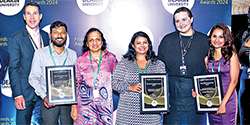


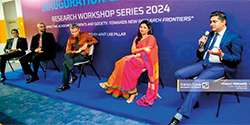
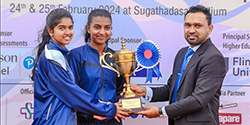




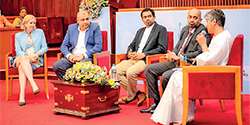




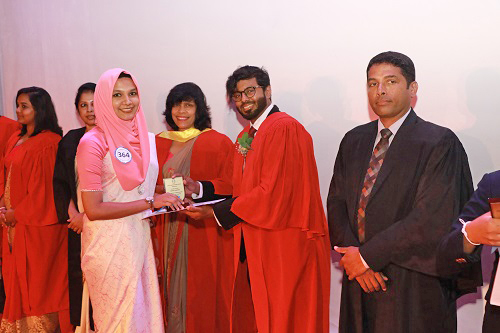

.jpg)

.jpg)
.jpg)
.jpg)
.jpg)
